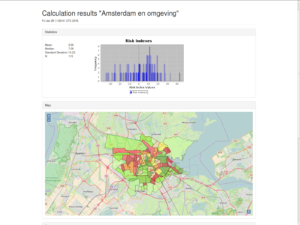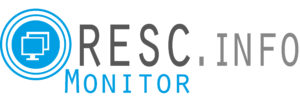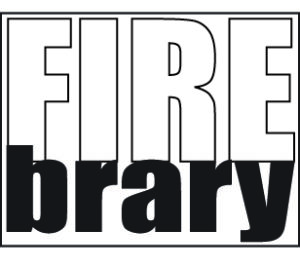
 The traditional role of fire departments has always been to rescue life and goods during incidents and advise on preventive measures during construction. Slowly fire departments are also focusing on education of the public on how to live safely. General campaigns to install smoke detectors are well known to the public. Making sure that people can live safely in the place they call home is the ultimate goal of the modern fire department. Although the education has had a significant impact on the number of fatalities, especially in residential fires, it seems that the decline has stabilized.
The traditional role of fire departments has always been to rescue life and goods during incidents and advise on preventive measures during construction. Slowly fire departments are also focusing on education of the public on how to live safely. General campaigns to install smoke detectors are well known to the public. Making sure that people can live safely in the place they call home is the ultimate goal of the modern fire department. Although the education has had a significant impact on the number of fatalities, especially in residential fires, it seems that the decline has stabilized.
In the last decade more and more fire departments have been conducting forensic research in the after math of fires in residential areas. This has developed in clear insights in which factors play an important role in the likelihood of a fire at home. Together with the abundance of data about the general population in residential areas it should be possible to create insights in the locations where residential fires are more likely to happen.
“If fire departments have fire risk specific insights, isn’t it their moral obligation to educate the people at risk better?”
RESC.Info Insight provides the fire department with the tools to combine its forensic research data, internal statistical data and public available data. The combining is managed in our web based platform where a variety of calculations can be made, stored and compared. The results of the calculations are shown in an intuitive user interface which allows to quickly assess the locations which need extra attention. Forecasts about future population distribution can also be a valuable source to generate a outlook for future educational campaigns or placement of resources such as fire stations. The methods used to create these calculations can be shared with other fire departments stimulating open innovation.
Web based
RESC.Info Insight is a web based service offered on open standards, allowing you to easily exchange the generated data with other products. Cloud technology ensures you will always be able to run the latest version of the product without installing updates or going through upgrade paths. This is reflected in our pricing model, no additional costs everything is fixed fee based.
Contact us
Are you curious what you can learn through RESC.Info Insight? Send us an email at info@netage.nl we will contact you with information about our on-site demonstration options.

The world around us, the environment we as fire departments operate in, is more and more focused on data and the digital information devices that come with it. In the past decade digital information dramatically changed our personal lives , think about it: social media, online shopping, online banking and instant worldwide news coverage. To stimulate economic growth we read a lot about ‘Data driven economy’ and ‘Data is the new oil’, but what does this mean for us, the fire departments?
Currently a lot of fire station’s get dispatched by a LED news ticker with encoded messages, announcements called by the voice of a speech computer or a traditional radio broadcast directly by the dispatcher. Some fire depart¬ments have a matrix printer from which they tear of a paper run sheet before leaving. This information is enriched after leaving the station, either by more information which is available in the vehicle, delivered through apps on tablet computers, summary information from a navigation system, information on paper or by the dispatcher over the radio.
RESC.Info Monitor is a system designed for use as a center of information for emergency responders. The system is device agnostic, focusing on the information itself rather than the mode of delivery.
“RESC.Info Monitor gives me all the information I can absorb in the 10 seconds before we turn out”
The use of RESC.Info Monitor to provide information at the station means that emergency responders are able to assimilate the information quickly. The release of only the most critical information at any one time means that responders can put it to use straight away.
The Product
RESC.Info Monitor consists of two components: at the heart is a central server, the RESC.Info Base; the second component is the computer screen where the information is displayed, the RESC.Info Station.
RESC.Info Base collects information from the system at the dispatch center (the CAD system). The digital incident reports give the address, a code for the intended station or vehicle, the type of incident, comments about the location and a description of the incident itself. Further background information about the incident or location can be collected from data sources outside the fire service. The type of information differs according to the country, region, jurisdiction, or even the individual dispatch center concerned. This information is then transmitted via an “open standard” to RESC.Info Station, which translates and displays the information on specific computer screens.
The standard maps used on the interface are taken from OpenStreetMap. Depending on the client’s wishes, it is also possible to use other maps, for example from their own map server.
Contact us
Are you curious what you can learn through RESC.Info Monitor? Send us an email at info@netage.nl, we will contact you with information about our on-site demonstration options.

Firebrary , elektronisch gegevens woordenboek brandweer Nederland.
Nu we als hulpverleningsdiensten steeds meer gebruik gaan maken van elektronische gegevens uitwisseling is het belangrijk dat alle partijen die deelnemen aan deze gegevens uitwisseling overeenstemming hebben over de gebruikte begrippen en termen. Of op zijn minst toegang hebben tot de definities van de gebruikte termen.
Een elektronisch gegevens woordenboek dat online beschikbaar is zorgt ervoor dat alle partijen altijd de laatste versie van het gegevens boek kunnen raadplegen.
Naast het beschikbaar stellen van de termen verdient het de aanbeveling om ook het beheer en onderhoud van deze termen in een online platform te doen. Dit voorkomt het ‘verdwijnen’ van de definities in tekst documenten of spreadsheets op websites.
De toegang tot dit woordenboek moet zowel mogelijk zijn voor de mens, het opzoeken en lezen van begrippen en definities, als ook voor software systemen.
In het kader van (taal) grensoverschrijdend inzetten van hulpdiensten is het belangrijk dat het mogelijk is om de definities en termen meer talig aan te kunnen bieden.
Door gebruik te maken van internationaal erkende standaarden voor het uitwisselen van definities en taxonomieën is het mogelijk om standaard software toe te passen voor het gebruik van het gegevens woorden boek.
Hulpverleningsdiensten zijn niet de enige overheids instellingen die bezig zijn met het vast leggen van hun begrippen en termen in online platformen. Het verdient daarom de aanbeveling om bij het kiezen van platformen en standaarden aan te kunnen sluiten bij andere overheids instellingen.
Voor de Firebrary, de Brandweer Bibliotheek, is gekozen om de uiteindelijk definities aan te bieden als linked data volgens het SKOS en SKOS-XL model , Een internationale standaard die het mogelijk maakt om gegevens aan te bieden via het web. Het grote voordeel is dat er geen speciale tools nodig zijn om de definities te gebruiken.
Daarnaast wordt deze methode reeds gebruikt door o.a. EuroVoc en de stelsel catalogus van de Nederlandse overheid. Vooral deze laatste is interessant omdat dit ons in staat stelt om in de eigen domeindefinities te verwijzen naar begrippen waar de hulpdiensten zelf geen ‘eigenaar’ van zijn. Als voorbeeld, in de Landelijke Meldings Classificatie wordt het begrip, Brand Gebouw, gebruikt en voor de onderverdeling in soorten gebouwen verwijzen we naar de wet. Deze definitie en begrippen zijn ook beschikbaar in de stelsel catalogus zodat we direct daarnaartoe kunnen verwijzen. In de stelsel catalogus zorgt de wettelijke ‘eigenaar’ van de term dat deze in de laatste versie beschikbaar is.
